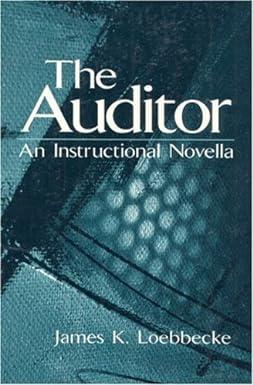Answered step by step
Verified Expert Solution
Question
1 Approved Answer
Paul Company acquired 100% of the outstanding common stock of Saul Company on June 30, 2014 for $473,000. On the acquisition date, Saul Company had
| Paul Company acquired 100% of the outstanding common stock of |
| Saul Company on June 30, 2014 for $473,000. |
| On the acquisition date, Saul Company |
| had retained earnings in the amount of $60,000; all other equity accounts have not changed since acquisition date. |
| the fair value of its recorded assets and liabilities was equal to their book value. The excess of |
| cost over the fair value of the recorded net assets was attributed to |
| an unrecorded manufacturing formula held by Saul Company, which |
| had an expected remaining useful life of five years from June 30, 2014. |
| On December 31, 2014, Paul company sold equipment (with an |
| original cost of $100,000 and accumulated depreciation of $50,000) |
| to Saul Company for $97,500. This equipment has |
| a remaining useful life of 5 years. |
| During 2015, Saul Company sold land to Paul Company at a |
| profit of $15,000. Paul still holds the land acquired from Saul. |
| The inventory of Paul Company on December 31, 2015 included goods |
| purchased from Saul Company on which Saul journalized a gross profit from the interco sale |
| of $7,500. |
| During 2016, Saul Company sold goods to Paul Company for |
| $375,000, of which $60,000 was unpaid at December 31, 2016. The |
| December 31, 2016 inventory of Paul Company included goods acquired |
| from Saul Company on which Saul journalized a gross profit from the interco sale of $10,500. |
| During 2016 Paul Company sold goods to Saul Company for $600,000 |
| at a markup on sales of 20%. At December 31, 2016, 30% of these goods |
| remain unsold by Saul Company. Saul Company still owes Paul |
| Company $120,000 for these inventory purchases. |
| On January 1, 2016 Saul Company reports $600,000 in bonds outstanding with |
| a book value of $564,000. Paul purchases half of these bonds on the open |
| market for $291,000. The intercompany bond transaction is attributed to the |
| parent company. |
| Required: Carefully Follow and label each step. |
| 1. Prepare the acquisition analysis as of acquisition date. Compute the |
| unamortized balance in the unrecorded manufacturing formulas as of 1/1/2016. |
| 2. Analyze each intercompany transaction. Label as either upstream |
| downstream. |
| 3. Calculate Net Income Allocated to the Controlling Interest (aka consolidated net income) |
| 4. Verify the calculation of the balance in the acccount equity in sub |
| earnings and record the parent company entries with respect to its equity |
| investment in sub for the year 2016. |
| 5. Prepare all elimination entries for 2016. |
| 6. Complete the consolidating spreadsheet for the year ended 12/31/2016. |
Step by Step Solution
There are 3 Steps involved in it
Step: 1

Get Instant Access to Expert-Tailored Solutions
See step-by-step solutions with expert insights and AI powered tools for academic success
Step: 2

Step: 3

Ace Your Homework with AI
Get the answers you need in no time with our AI-driven, step-by-step assistance
Get Started


